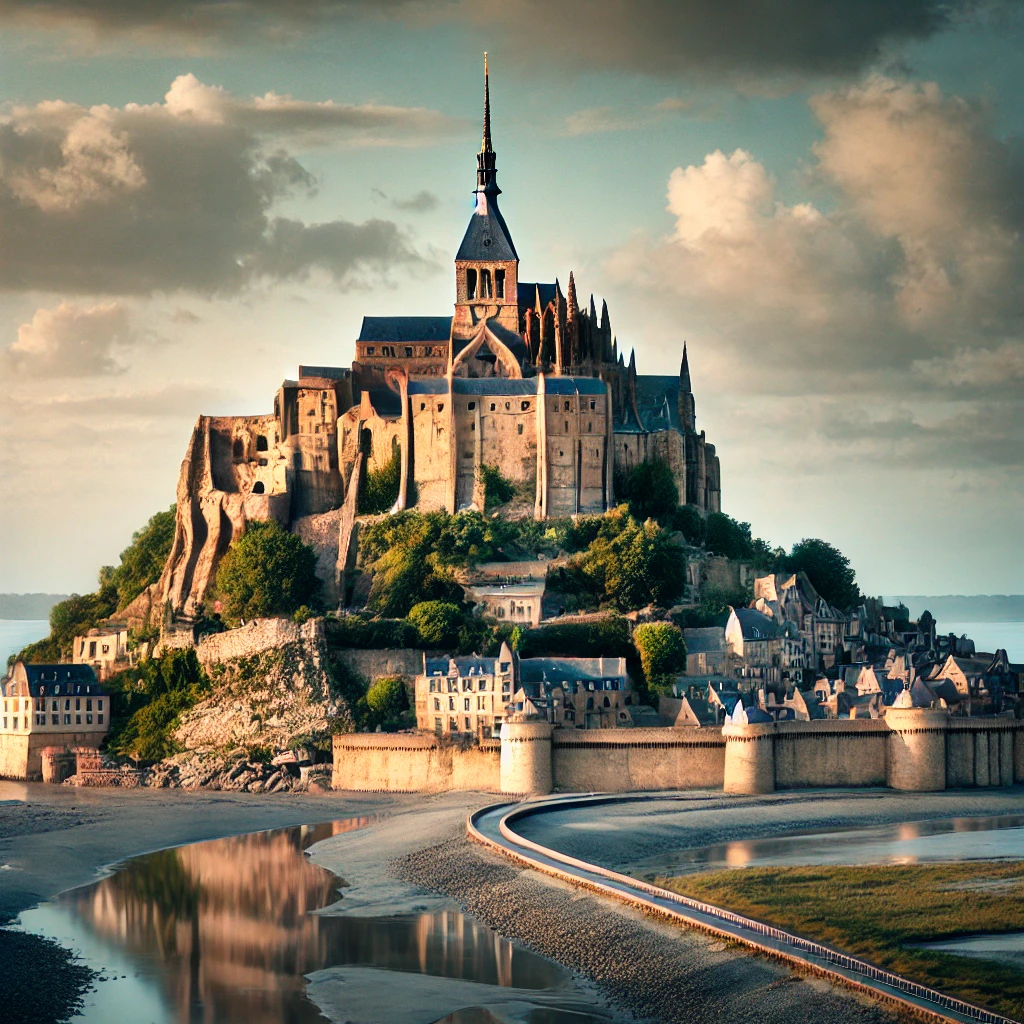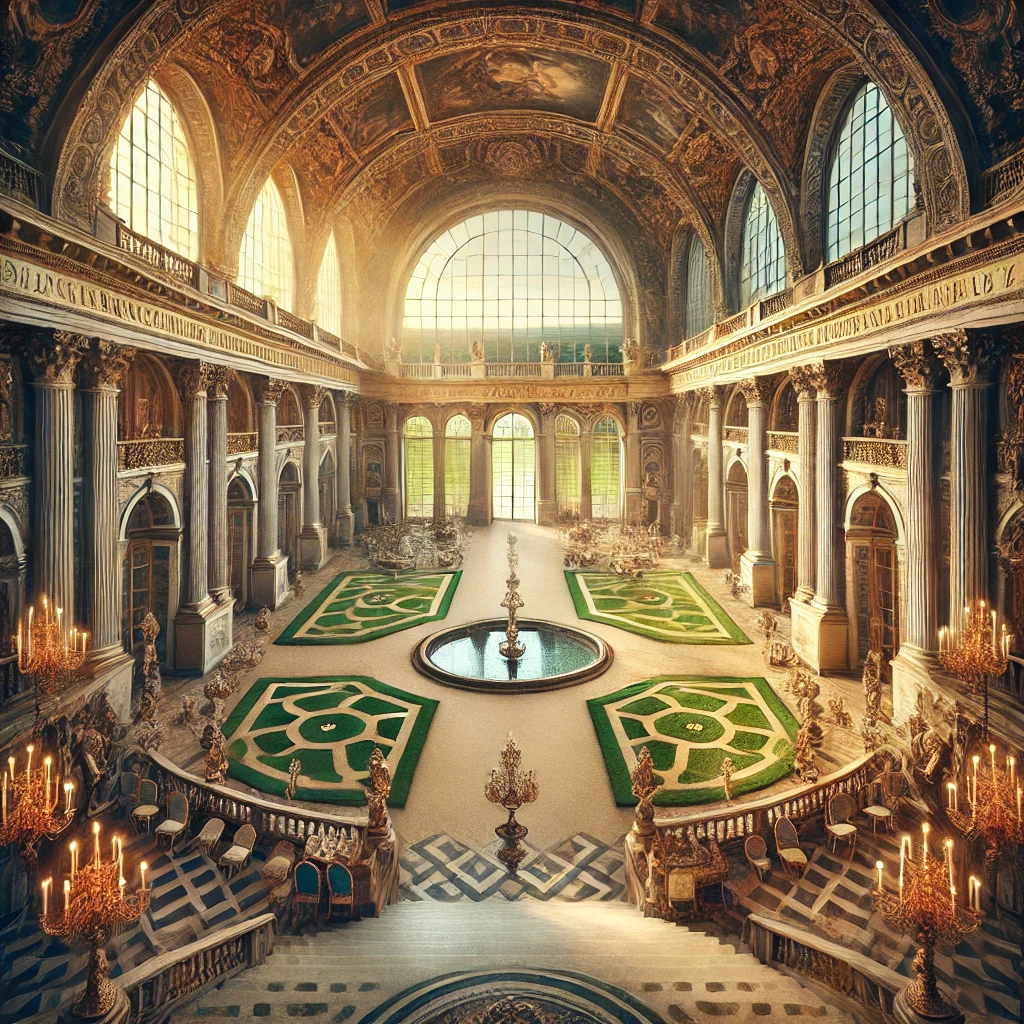Table of Contents

Introduction to France’s Rich Heritage
France stands as a vibrant tapestry woven with threads of ancient legacies and stories of valiant history. Recognized globally for its profound historical significance, the country boasts an extensive array of heritage sites that span millennia. From Roman ruins evoking the grandiosity of an ancient empire to majestic medieval castles that once echoed with the sounds of clanging armor, history enthusiasts find themselves immersed in a journey through time.
The allure of France’s heritage sites lies in their diversity and depth. Roman remnants like the Arena of Nîmes speak of an era when gladiatorial games captivated thousands. Conversely, the medieval castles such as Château de Chambord encapsulate the grandeur and strategic acumen of French nobility during turbulent times. These structures not only represent architectural marvels but also serve as pivotal locations where significant historical events unfurled.
World War landmarks, including the Normandy beaches, provide poignant reminders of more recent history. They stand as solemn testaments to the monumental events that shaped the modern world. Walking along these historic shores, one can’t escape the echoes of a time when the courage and sacrifice of many altered the course of history.
Indeed, France’s heritage sites are more than mere attractions; they are the custodians of stories, triumphs, and tribulations. Each monument, each ruin, and each castle has a tale to tell, a legacy to be honored. These storied places beckon visitors to not just witness, but to experience and acknowledge the rich depths of French history. Thus, as you embark on your journey through these heritage sites, you are not just walking through history; you are reliving the grandeur, the struggles, and the enduring spirit of a nation that has significantly shaped the world we live in today.
The Majestic Castles: A Glimpse into Royalty

France showcases a remarkable array of heritage sites, with its majestic castles standing as a testament to its grandiose past. Among these, the Château de Chambord, Château de Versailles, and Château de Chenonceau are unparalleled in their architectural splendor and historical significance. These grand structures offer intriguing insights into French history, narrating tales of royalty amidst their impressive walls.
Château de Chambord, recognized for its distinctive French Renaissance architecture, is a marvel of structural innovation. Constructed in the early 16th century by order of King Francis I, its design amalgamates traditional medieval forms with classical Renaissance structures. A key highlight is the double helix staircase, allegedly influenced by Leonardo da Vinci. Visitors are drawn to its elaborate façades, extensive parklands, and the panoramic views from the castle’s terraces, encapsulating a quintessential experience of France’s regal heritage.
Next, Château de Versailles stands as a symbol of absolute monarchy, epitomized by Louis XIV, the Sun King. Redesigned from a modest hunting lodge into a sprawling palace, Versailles epitomizes opulence and grandeur. The Hall of Mirrors, adorned with intricate chandeliers and exquisite paintings, reflects the extravagance of the French court. Moreover, the meticulously landscaped Gardens of Versailles, featuring ornate fountains and statues, offer a visual feast for visitors. Touring the royal apartments provides a glimpse into the lavish lifestyle of French royalty.
Lastly, the enchanting Château de Chenonceau, often referred to as “The Ladies’ Castle,” is notable for its elegant architecture and its bridge spanning the River Cher. Its history is intertwined with influential women, including Diane de Poitiers and Catherine de’ Medici, who left their mark on its development. The castle’s exquisitely furnished rooms, vibrant gardens, and the unique gallery that stretches over the river are primary attractions, securing its place among France’s most captivating heritage sites.
Visiting these iconic castles offers more than just an architectural tour; it’s an immersive journey through the annals of French history. Each castle presents not only monumental beauty but also rich stories embedded in their walls, providing a comprehensive view of the nation’s royal heritage. Whether it is through scrutinizing intricate designs, strolling through royal gardens, or exploring majestic halls, these sites ensure an unforgettable experience steeped in history and grandeur.
Ancient Roman Ruins: Traces of an Empire

In the expanse of French history, the remnants of the Roman era stand as monumental testaments to a once-mighty empire. Among these, the Arles Amphitheatre, the Pont du Gard, and Lyon’s Ancient Theatre of Fourvière are some of the most striking examples of ancient Roman architecture still standing today.
The Arles Amphitheatre, constructed in 90 AD, mirrors the grandeur of the Colosseum in Rome. With a capacity to hold up to 20,000 spectators, it was originally used for gladiatorial contests and public spectacles. Today, this heritage site continues to attract visitors for concerts and bullfighting events, symbolizing an enduring legacy that bridges past and present.
Equally impressive is the Pont du Gard, a towering aqueduct near Nîmes. Built in the first century AD, this architectural marvel spans the Gardon River and stands as a testament to Roman engineering prowess. At 50 meters high, the Pont du Gard was part of a 50 km-long aqueduct system, providing water to the city of Nîmes. Its preservation is crucial, showcasing the ingenuity of ancient engineers and serving as an educational site for engineering principles used even today.
In Lyon, the Ancient Theatre of Fourvière offers another glimpse into Roman influence. Dating back to 15 BC, this theatre could accommodate around 10,000 people, and it stands as evidence of the cultural importance placed on performance and social gatherings. Contemporary festivals and performances held at this site not only bring the city’s ancient history back to life but also highlight the theatre’s historical and cultural significance.
Preserving these Roman heritage sites is paramount. They offer invaluable insights into architectural techniques, social customs, and the expansive reach of the Roman Empire into what is now modern-day France. The importance of these structures transcends their historical context, providing a cultural link between past and present, and contributing significantly to France’s rich tapestry of heritage.
Medieval Marvels: From Cathedrals to Fortified Villages

France boasts a splendid array of medieval sites that underscore its illustrious history. Among the most celebrated are Mont Saint-Michel, Chartres Cathedral, and the medieval city of Carcassonne. These heritage sites are not only architectural masterpieces; they are also profound testimonials to the nuanced tapestry of French history.
Mont Saint-Michel, perched on a rocky island in Normandy, exemplifies the awe-inspiring architecture of the Middle Ages. Initially a humble sanctuary, it blossomed into an unparalleled abbey over centuries. Its strategic location made it both a fortress and a pilgrimage site, mirroring the dual essence of medieval spirituality and warfare. Today, Mont Saint-Michel captivates visitors with its towering spires and labyrinthine alleys, preserving the mystique of its storied past.
The Chartres Cathedral stands as another monumental beacon of medieval ingenuity. Renowned for its splendid Gothic architecture, the cathedral has attracted worshippers and tourists alike. Its stained-glass windows, crypt, and labyrinth are not merely artistic achievements but also narratives etched in glass and stone. Chartres has played a pivotal role in religious ceremonies and social gatherings, acting as a sanctuary for believers and a hub of medieval social life. Its continued preservation exemplifies the respect accorded to such historical edifices in French history.
Carcassonne, a fortified city in Southern France, delivers an immersive medieval experience. The city’s citadel, complete with double walls and watchtowers, has witnessed myriad historical events, from Roman conquests to medieval battles. Carcassonne’s fortifications are emblematic of the military strategies deployed during medieval periods. It has also served as a bustling center of trade and daily life, offering glimpses into how people lived and worked within its fortified confines. Conservation efforts have meticulously restored Carcassonne, allowing modern-day visitors to traverse centuries-old cobblestone streets and imagine life during those times.
These medieval marvels not only illuminate the grandeur of bygone eras but also offer invaluable insights into the socio-cultural landscape of medieval France. By preserving these heritage sites, France ensures that the splendor and intricacies of its medieval history continue to be appreciated and studied by future generations.
Renaissance Splendor: France’s Artistic Reawakening

The Renaissance period marked a monumental epoch in French history, one characterized by an extraordinary rebirth of artistic, architectural, and cultural magnificence. Among the numerous heritage sites that exemplify this reawakening, Château de Fontainebleau stands out as a testament to the artistic legacy of the era. Fontainebleau, often dubbed the “house of centuries,” hosted French monarchs from Francis I to Napoleon III and serves as a living museum of Renaissance art and architecture. Visitors can marvel at the intricate frescoes, opulent galleries like the Galerie François I, and expansive gardens that epitomize the era’s grandeur.
Another bastion of Renaissance heritage is the city of Blois, whose Château de Blois encapsulates the architectural evolution from Gothic to Renaissance. This historic site bears witness to the dynamic cultural shifts that occurred as French artisans and thinkers, drawing inspiration from the Italian Renaissance, imbued their work with newfound creativity. Significantly, the château was the residence of several major figures such as King Louis XII and Francis I, whose patronage fueled an artistic reawakening replete with elaborate stonework and pioneering artistic styles.
Integral to the Renaissance’s profound cultural impact is the array of artwork and cultural artifacts that have endured through centuries. Museums and historical sites across France showcase masterpieces by luminaries like Leonardo da Vinci, who spent his final years at Clos Lucé in Amboise under the patronage of Francis I. The king’s dedication to cultural expansion led to the establishment of art schools and academies, cementing France’s status as a beacon of Renaissance art and scholarship.
The preservation of these heritage sites is paramount in perpetuating their historical significance. Continuous conservation efforts endeavor to maintain the structural integrity and aesthetic allure of these cultural treasures. Such initiatives ensure that future generations can experience the awe-inspiring splendor of France’s Renaissance heritage, perpetuating an appreciation for a period that irrevocably shaped global cultural landscapes.
Revolutionary Relics: France’s Path to Modern Democracy

France’s journey to modern democracy is punctuated by pivotal locales that echo the cries of “liberté, égalité, fraternité.” One of the most iconic heritage sites tied to the French Revolution is the Bastille. Once a fortress-turned-prison, the storming of the Bastille on July 14, 1789, marked the insurrection’s start and has since become symbolic of the struggle against oppression. Although the Bastille was demolished soon after its fall, its legacy is immortalized through the July Column and the annual Bastille Day celebrations.
Equally significant is the Place de la Concorde, the largest square in Paris and a silent witness to the Reign of Terror. Originally named Place Louis XV, it was later called Place de la Révolution. Here, during the height of the revolution, the guillotine claimed the lives of key figures such as King Louis XVI and Marie Antoinette. The square, retted with bloodshed, was rebranded as Place de la Concorde to symbolize national reconciliation. Today, it serves as a potent reminder of the turbulent history that contributed to shaping modern France.
The Palace of Versailles, another monumental site, played a critical role during the early days of revolutionary fervor. It was here on October 5, 1789, that the Women’s March brought King Louis XVI and his court back to Paris, effectively ending the monarch’s absolute reign. Versailles showcases both the opulence of the French monarchy and the revolutionary zeal that sought to dismantle such disparities. The palace and its grounds, now a UNESCO World Heritage site, offer a profound glimpse into the French history and the revolution’s impact on global democracy movements.
Modern visitors to these heritage sites find more than mere historical remnants; they encounter living testaments to the enduring spirit of the French Revolution. Through monuments, museums, and guided tours, these destinations continue to educate and inspire, allowing people worldwide to appreciate the evolution of democratic ideals. As such, the Bastille, Place de la Concorde, and the Palace of Versailles remain critical in understanding France’s path to modern democracy and its influence on contemporary governance structures.
World War Landmarks: Memories of Conflict and Courage

France, with its rich tapestry of history, is home to numerous landmarks that bear witness to the profound effects of the World Wars. Among these are the Normandy beaches, the Somme battlefields, and the Verdun Memorial – each a poignant reminder of conflict and courage, encapsulating critical aspects of French history and global heritage.
The Normandy beaches stand as iconic testimonies to the bravery displayed during D-Day on June 6, 1944. These shores were the scene of one of the most significant military offensives in history, marking the beginning of the end of World War II. Today, visitors walk the sands of Utah, Omaha, Gold, Juno, and Sword beaches, reflecting on the immense sacrifices made by Allied forces. Memorials and museums pepper the coastline, providing a somber educational experience that bridges past and present.
Moving inland, the muted landscapes of the Somme battlefields reveal another layer of wartime history. The Battle of the Somme in 1916 was one of the bloodiest conflicts in World War I, resulting in over a million casualties. Sites such as the Thiepval Memorial and the preserved trenches at Beaumont-Hamel immerse visitors in the stark reality of trench warfare. The personal stories of soldiers, retold through letters and diaries, humanize the arc of heroism and loss, urging a deeper understanding of the sacrifices that shaped the 20th century.
The Verdun Memorial commemorates the ten-month-long Battle of Verdun in 1916, another pivotal episode in World War I. This memorial, alongside the Ossuary and the remnants of Fort Douaumont, preserves the memory of the 300,000 lives lost. Visitors can explore the somber exhibits detailing the relentless nature of warfare and witness the landscape still scarred by the relentless shelling. These sites underscore the indomitable spirit of France and highlight the continuous efforts to preserve these historical markers for future generations.
Heritage sites like these serve not just to remember the past, but also to educate and inspire the future. They stand as solemn testimonials to courage and sacrifice, ingraining the lessons of history in the collective memory for all who visit.
Preserving the Past: Conservation Efforts and Future Challenges
The meticulous preservation of France’s heritage sites is an endeavor of both national pride and global significance, engaging a multitude of organizations dedicated to protecting these treasures. Institutions like the Centre des Monuments Nationaux (CMN) and the French Ministry of Culture spearhead initiatives to conserve historical landmarks. Their strategies encompass routine maintenance, structural restoration, and the meticulous documentation of French history, ensuring that future generations can explore and learn from these poignant legacies.
Balancing the influx of tourism with the imperative of conservation presents an ongoing challenge. While tourism provides critical revenue that supports restoration projects, it also poses risks to the integrity of heritage sites due to wear and tear. Consequently, there is a concerted effort to regulate visitor numbers, enhance infrastructure, and educate the public about the importance of respectful tourism. For instance, initiatives like the “Patrimoine en Mouvement” campaign focus on promoting sustainable tourism that minimizes negative impacts while heightening appreciation for cultural heritage.
Technological advancements have revolutionized preservation techniques, offering novel solutions to age-old problems. The use of 3D scanning and digital archiving allows for precise restoration work and the creation of detailed virtual models of heritage sites. These technologies not only ensure that repairs are accurate but also serve as vital records for future conservators. Additionally, innovations in materials science contribute to more effective and durable restoration methods.
International cooperation plays a vital role in preservation efforts. Through partnerships with UNESCO and the European Union, France engages in collaborative projects that pool expertise and resources. This global approach aids in addressing common challenges such as climate change, which threatens to alter the structural stability and aesthetic integrity of heritage sites.
Looking ahead, the ongoing preservation of French history must navigate numerous obstacles, from environmental changes to evolving societal values. However, the commitment to heritage conservation remains staunch, driven by the recognition of its role in nurturing cultural identity and fostering education. Future plans are increasingly focusing on integrating local communities in preservation efforts, ensuring that the legacy of these sites continues to inspire and educate for generations to come.





